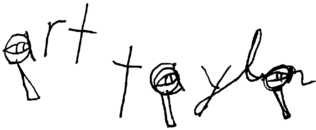I’m pleased to host today guest reviewer Brandon Wicks (who will perhaps be making more frequent appearances at this site). Wicks is a writer based in Atlanta, GA, and currently teaching at Emory University. His fiction has most recently appeared in Sou’wester and Smokelong Quarterly.
Chasing the White Dog: An Amateur Outlaw’s Adventures in Moonshine
By Max Watman
Reviewed by Brandon Wicks
It’s no secret that in recent decades America has become a nation of alcohol enthusiasts. No longer are our beer selections dominated by industry monoliths, and a good bottle of wine does not mean a foreign label. Microbreweries abound across the country, and nano-wineries dot both seaboards. With this growth has come an even larger boom of hobbyist enterprise: specialty stores and trade publications, home brewing and wine making kits. Everyone has a brother, it seems, who bottles his own beer as Christmas gifts.
 In his new book, Chasing the White Dog: An Amateur Outlaw’s Adventures in Moonshine, Max Watman turns our attention to what very well may be the last secret in craft alcohol: distilling liquor. Moonshine — variously called white dog, white lightning, hooch, bootleg, likker, or simply corn whiskey — usually means grain spirits and most certainly means illegal. Watman weaves together our venerable American history of illicit booze, from the Whiskey Rebellion and Prohibition to NASCAR and contemporary courtroom battles, with his own experiments in home distillation.
In his new book, Chasing the White Dog: An Amateur Outlaw’s Adventures in Moonshine, Max Watman turns our attention to what very well may be the last secret in craft alcohol: distilling liquor. Moonshine — variously called white dog, white lightning, hooch, bootleg, likker, or simply corn whiskey — usually means grain spirits and most certainly means illegal. Watman weaves together our venerable American history of illicit booze, from the Whiskey Rebellion and Prohibition to NASCAR and contemporary courtroom battles, with his own experiments in home distillation.
The story begins with a pair of conundrums that fuel Watman’s curiosity: New York City honky-tonks and an Appalachian archetype of moonshine, the rascally bearded Marvin “Popcorn” Sutton, who, sporting cell phone and instructional DVDs, begin to reveal the business behind what is traditionally considered the official tipple of rugged individualism. Of Popcorn, Watman says that at first he “thought of him as the Andy Warhol of hooch. Just another example of how something that had once been purely American and real had transformed, for purposes of display, into something else.” From here, Watman explores that “something else,” tracing the transformation of moonshine.
Indeed, the best moments come from cracking open the regional stereotypes of shine to get a peek at its reality: that the biggest consumers of moonshine are the impoverished African-American enclaves of North Philadelphia, that sugar jack — a truly poisonous, mass-produced rotgut — dominates the underground market of illegal liquor (just one defendant in United States v. Helms et al. was estimated at netting $8,380,000 in retail over a seven-year period), and that a more affluent class of sub rosa hobbyist distillers is on the rise. With these, the book lays bare the troubling connections (or disconnections) between artisanal interest in home distillation, folkways tourism, and the nip joints flourishing in depressed communities like Danville, VA, which are less about preserving the “old ways” or tasting notes than meeting a demand for cheap intoxicants, side-by-side with crack and crystal meth.
While not more legally advisable, Watman’s own forays into distilling liquor prove both instructional and entertaining. He breaks down the entire process with a prose that is at once easy-going and precise. Mash bills, fermentation, and pot-and column-still mechanics all get their due without feeling overburdened by the technical detail (though while building a still, the dilemma of reducing a 1/2-inch pipe with a 3/8-inch fitting is less than gripping narrative for anyone but the most curious enthusiast). Moreover, in the hunt to perfect his own basement product, Watman crisscrosses the country touring microdistilleries and holding forth with a Who’s Who of independent distillers and spirits experts, and the alcoholic territory gets expansive: whiskies, vodka, and eau de vie to name a few.
Watman’s journey culminates as a press member in a federal court case, United States v. Jody A. Smith et al., which ties the historical narrative into the present day reality and his own affiliations with bootleg. Perhaps a little too true to life, the court case drags on, weighed down by an insistent portrayal of the defendants as good honest folk. In fact, despite its better intentions, the book frequently romanticizes outlaws, specifically the rough and rowdy good old boys, and in one case — a brief reverie on the Civil War and confederate battle flag—falls into the dubious territory of Southern Apologists, regardless of attempts to be evenhanded. By the time U.S. v. Jody Smith rolls around, the federal government-as-bogeyman motif may wear a little thin. However, it drives home, quite literally, an important point: that home distillation for personal consumption, unlike making beer or wine, is still actively prosecuted as a felony — an antiquated piece of legislation that Max Watman and many otherwise-law-abiding citizens would like to see reformed.
In the end Chasing the White Dog promises the true experience of moonshine, both past and present, but bears more than a passing resemblance to Marvin “Popcorn” Sutton — equal parts historical tourism and know-how, with a heap of showmanship. Which is perhaps more true to the authentic, more “purely American and real,” than we usually like to admit.






Pingback: Review: 52 Loaves by William Alexander « Art & Literature
Where could I purchase a jar? I live in Colorado.
Thanks………………..
This reviewer sounds like a young wheat drinker.